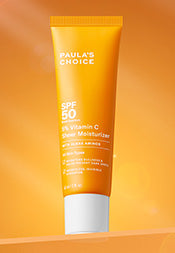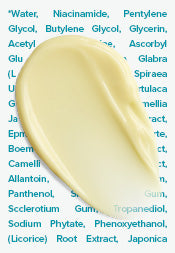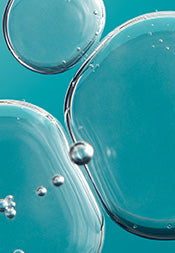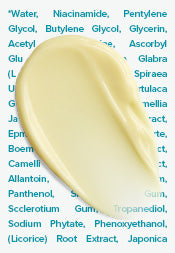What Are Ceramides and How Do They Work in Skincare Products?
As far as anti-ageing ingredients in skincare products go, ceramides have a proven record. However, they’re often overlooked and rarely explained. Here at Paula’s Choice, we dive deep to find out how ceramides help skin retain moisture, fortify its protective barrier, and keep its appearance firm and plump — especially given the recent research that clarifies ceramides’ unique ability to rejuvenate one’s skin.
We’ve gathered the research-supported answers below to your top ceramide-related questions.
What are ceramides?
Ceramides are lipids (fats) found naturally in high concentrations in the uppermost layers of our skin. They make up over 50% of skin’s composition, so it’s no surprise that they play a vital role in determining how our skin looks (and how it responds to environmental threats).
What do ceramides do?
Think of ceramides as the mortar between bricks — with the bricks being your skin cells. Ceramides help hold skin together by forming a protective layer that limits moisture loss and protects against visible damage from pollution and other environmental stressors. In addition, ceramides — even more than retinol, niacinamide, and peptides — are one of the anti-ageing “powerhouses” responsible for supporting our skin’s dynamic nature. Two ceramide precursors, more specifically — phytosphingosine and sphingolipids — help our skin make more ceramides.
If my skin already contains ceramides, do I still need them in my skincare products?
Age and sun damage reduce the effectiveness of your skin’s natural ceramides — and can eventually deplete them, which weakens your skin’s barrier. The results of this process are drier, rougher skin, wrinkles, irritation, redness, and visible signs of dehydration. This is where skincare knowledge comes into play — because it really is possible to significantly restore what has been diminished.
What are the benefits of ceramides?
Well-formulated (and properly packaged) anti-ageing skincare products with ceramides will help reinforce your skin’s barrier and increase hydration — giving you plumper, smoother, firmer-feeling skin with fewer visible lines and wrinkles, as well as fewer signs of sensitivity.
What do you mean by “properly packaged” ceramide products?
Many anti-ageing ingredients that are very beneficial for your skin aren’t stable. Simply put, they will lose their effectiveness when exposed to light and air — which is exactly what happens every time you open a jar. Look for products in tubes or opaque bottles with pumps or airtight dispensers; they’ll keep your anti-ageing products performing the way they should.
How will I know if a product contains ceramides?
Generally, you’ll see the word ceramide on the ingredients list (look for: ceramide AP, EOP, NG, NP, or NS). Another thing to search for on such lists are ingredients related to ceramides. For example, phytosphingosine and sphingosine are ingredients known as ceramide precursors, meaning they can nudge skin into making ceramides. But given ceramides’ stellar anti-ageing abilities, most products will have them placed prominently on their labels or product pages if they’re included in the formula.
Which skin types are ceramides best for?
Ceramides fall under the category of “skin-replenishing” (aka skin-identical) ingredients. Because they’re naturally a part of your skin, ceramides are ideal for all skin types — even the most sensitive, breakout-prone, or oily dehydrated skin. They’re also safe to use around the eyes, as long as the product is non-irritating and fragrance-free.
Which other ingredients do ceramides work well with?
Ceramides are most effective when combined with other skin-replenishing ingredients like fatty acids, glycerin, and cholesterol. Lipid mixtures like these are ideal for improving skin tone, skin texture, and relieving signs of sensitivity. But, because no single ingredient can do everything to combat the visible signs of ageing, be sure your ceramide-enriched product also contains antioxidants and what we refer to as “skin-restoring” ingredients; for example, retinol, niacinamide, linoleic acid, and peptides.
Can you use vitamin C with ceramides?
As with other anti-ageing ingredients, you can successfully use vitamin C products with ceramide products for enhanced benefits. In fact, vitamin C and ceramides pair well together in the same products, where they help restore skin’s firmness and supple feel.
Can I combine ceramides with other skincare products?
Products with ceramides can be used with any other Paula’s Choice Skincare products; they’re all designed to work in tandem. Particularly, using a gentle leave-on AHA or BHA exfoliant will improve the effectiveness of your ceramide-enriched product as there won’t be a layer of dead skin preventing vital ingredients from being absorbed as they should.
Which Paula’s Choice Skincare Products contain ceramides?
- Clinical Ceramide-Enriched Firming Moisturizer for advanced surface repair and renewed resilience
- Clinical Ceramide-Enriched Firming Eye Cream to combat deep wrinkles and brighten under eyes
- Hyaluronic Acid Booster for a plumper, smoother appearance
- Resist Daily Smoothing Treatment 5% AHA for gentle, daily exfoliation
- Resist Barrier Repair Moisturizer for firmer, more radiant skin
- Clinical 1% Retinol Treatment to diminish the appearance of fine lines and wrinkles
- Omega+ Complex Serum to strengthen skin with essential nutrients
- Daily Replenishing Body Cream for smooth, radiant skin all over with a non-greasy finish
- CALM Repairing Sensitive Serum to soothe and visibly repair skin’s barrier
Ceramide oral supplements
Ceramides are naturally occurring and can be found in many plant-based food sources. These are typically referred to as phytoceramides. Today you can find ceramide supplements derived from wheat, beet, and even rice. Research has shown that orally ingested ceramide supplements can improve skin hydration levels.
Dairy, eggs, and soybeans also contain large amounts of sphingolipids. As mentioned previously, sphingolipids (e.g., sphingosine) help our skin produce more ceramides.
While you can easily get ceramides from food due to its abundance, it wouldn’t be sufficient if you’re looking to rejuvenate your ageing skin. However, you don’t need to take ceramide supplements to maintain a healthy diet.
Learn more about skincare ingredients.
Shop for our range of products with ceramides here.
References for this information
BMC Complementary Medicines and Therapies, January 2020, ePublication
Dermatologic Therapy, October 2019, ePublication
Pharmaceutical Research, February 2018, ePublication
International Journal of Cosmetic Science, June 2017, pages 284-291
Journal of Drugs in Dermatology, March 2017, pages 243-247
Journal of Cosmetic Dermatology, December 2016, pages 549-558
Skin Pharmacology and Physiology, March 2016, pages 135-147
Journal of Investigative Dermatology, June 2015, pages 1501-1509
Skin Research and Technology, November 2014, pages 409-415
Biochimica et Biophysica Acta, October 2014, pages 2473-2483
Journal of the American Academy of Dermatology, July 2014, pages 177-184
The Journal of Clinical and Aesthetic Dermatology, March 2014, pages 18-26
Recommended Products
ClinicalCeramide-Enriched Firming Moisturizer











